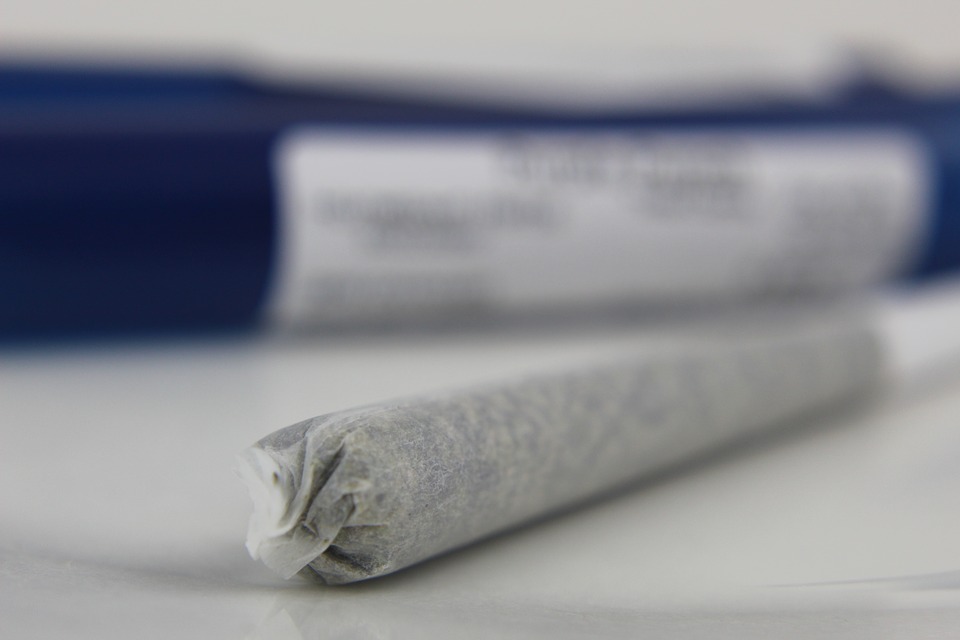Substance Use and the Developing Brain
Conveniently located to serve the areas of Santa Monica, Venice, South Bay, Brentwood, Beverly Hills, Pasadena and all of Greater Los Angeles

As the legalization of marijuana becomes more commonplace across the United States, the implications of substance use in youth are being discussed more than ever before.
A growing number of research studies are being conducted in order to learn more about the neurodevelopmental effects of marijuana use in adolescents and young adults.
Research on brain structure and functioning have been conducted after identifying heavy, early-onset (~<18 years old) marijuana use. These retroactive studies utilize MRI images of study participants’ brains to identify abnormalities in the shape, size, and volume of specific regions of the brain. In sum, the brains of early-onset marijuana users have been found to have significant differences than their late-onset or abstinent counterparts.1 These structural differences are believed to account for deficits or declines in cognition and executive functioning.2
Contents
About
It is important to identify the link between substance use, structural development, and functionality (cognition, memory, executive functioning, etc) in the adolescent brain. Neurofeedback training at NeuroZone offers adults and youth a way to directly address the state of their brain. As a means to not only help treat neural underdevelopment, but to also provide a non-drug-based method of treating the potential underlying issues that may cause a teen to self-medicate with marijuana.
Contact NeuroZone today for a neurofeedback consultation!
Brain Development
Neurotypical individuals experience specific milestones during specific stages of the life cycle. The plasticity of the brain allows it to transform as the individual learns and maintains new patterns. The brain matures in a back to front, bottom to top manner. This means that the areas responsible for gross motor, sensory, and lower level, “primitive” thinking processes mature early in life compared to the areas that control higher-order thinking, such as complex problem solving, decision making, and empathy.6
Gestational Period
Human gestation is typically 40 weeks in length.
During gestation, an embryonic nervous system and subsequent fetal brain undergoes significant, rapid changes. The changes that occur in the embryo are extremely important. It is during this period that any defects in cell differentiation and/or neural tube development and closure can result in spontaneous termination of the pregnancy or noticeable deficits in the mental and/or physical health of the child after birth.
The fetal period is considered from gestational week 9 until the end of gestation. During the fetal period, the brain begins with a smooth surface and is referred to as being “lissencephalic.” Neural pathways begin to form and continue through the post-natal lifespan.3
Postnatal Brain Development
Following birth, the first few years of a child’s life are marked with rapid brain development. About a million neural pathways are created every second during this time. The development of this vast neuronal landscape is logical when put into the perspective of the child’s brand new life experiences.4
After the surge in connections made during early childhood, the growing brain actually eliminates unnecessary pathways through a process called synaptic pruning.
By age 10, 50% of the synaptic connections that were present at age two are eliminated. This is where environmental influences play a large role. The more an environment encourages a synaptic connection, the stronger the connection will be. As the child continues to grow, more complicated connections form to align with the more complicated processes required of the brain, such as critical thinking.
The Adolescent Brain
The adolescent years may be wrought with impulsivity, irrational decision making, and a flurry of emotions. To many parents, experiencing this time in their child’s life can be stressful as they, seemingly, watch their child change right before their eyes.
Outside of the obvious physical changes that occur during this life stage, behavioral and emotional changes are in line with the internal changes that occur in a teen’s body. When it comes to the development of the brain, the amygdala is well-formed. This area of the brain is responsible for our immediate reactions, such as fear and aggression. The frontal cortex, the area of the brain that controls higher order thinking processes, is still in early stages of development.5
Until about the mid-twenties, the frontal cortex is under construction.
Neurotypical teens are more likely to behave based on emotions, have poor complex problem solving abilities, and have difficulty in decision making due to the undeveloped frontal cortex.6
Synaptic pruning continues and a concurrent secondary surge in neural connections occur during the adolescent years. This causes the physical structure of the brain to change; the amount of gray matter decreases (because of pruning) and the amount of white matter increases (synaptic connections).6
THC vs. CBD (Tetrahydrocannabinol vs. Cannabinol)
Marijuana consists of two cannabinoid compounds that garner plenty of attention. Those are THC and CBD. THC and CBD bind with the endocannabinoid receptors in the brain. Depending on the compound that interacts with the appropriate receptors, intoxication may or may not occur. CBD and THC operate differently in the body, producing various effects for the individual. THC is the psychoactive component in cannabis that provides users with the characteristic “high.” CBD, on the other hand, is non-psychoactive. When taken up by the endocannabinoid receptors, CBD does not produce a “high” for the user.
CBD and THC use for medical purposes range from pain management to epilepsy treatment, to addressing anxiety and depression and reducing nausea.13
Substances and Youth
Marijuana use among teens has increased in recent years. This may be directly correlated to the more lax attitudes towards the drug. The legalization of marijuana across many states has initiated conversation around cannabis use in youth in regards to access, health risks, and attitudes about substance use.7 Despite the spark in the eye of public policy, parents may not be versed on the effects of marijuana on their child’s growing brain.

Early onset marijuana use slows down or delays the brain’s pruning process. This has a direct effect on the increased volume of gray matter when compared to the brains of non-using adolescents. This delay in structural development has a correlation to decline in memory, attention, and IQ.8
With society becoming more accepting of marijuana use, teens may view it as less dangerous than other substances, and may be more willing to engage with marijuana earlier in life. With the introduction of stress, onset of mental health concerns, development of a psychosocial crisis, hormonal changes, and difficulty in interpersonal relationships that are typical of this developmental period, adolescents are likely to seek an outlet or way of coping during this tumultuous period in their lives.
The age of marijuana use onset in adolescents greatly affects the brain’s development, can exacerbate mental health issues, and initiate a substance use disorder, either to marijuana or other substances.8, 9
Because of the structural and functional changes occurring in the brain during adolescence, any introduction or chronicity of stress or substances can drastically alter neurotypical development. This significantly delays the time at which certain milestones may be met by the individual. Also, many mental health concerns manifest during this time period. If your teen is struggling with depression, chronic stress, anxiety, and/or ADHD, they may seek out a coping mechanism.
Marijuana and ADHD (Attention-Deficit/Hyperactivity Disorder)
ADHD is a neurodevelopmental disorder that presents as hyperactivity and impulsivity and/or inattention in a number of settings. The presentations – whether hyperactive, inattentive, or both – are disruptive to the individual’s functioning. This may look like a child who cannot sit still or an adult who may be easily distractible. As a result, performance in school, at work, and in the home may suffer.
To receive an ADHD diagnosis, a mental health or medical professional must determine that the reported symptoms have been present before age 12.
When cannabinoids are administered to address ADHD, symptoms have been shown to improve in the short-term, however, the long-term effects were significant and possibly impairing. Addiction and exacerbation of ADHD symptoms have been shown to be positively correlated to marijuana use.9
Anxiety and Marijuana Use
Normative anxiety is a stress response that may prepare an individual for the unexpected. The anxiety usually resolves when the stressor has been alleviated or eliminated. In the case of anxiety disorders, anxiety remains a stress response, but the stressor or the idea of the stressor does not alleviate. In this case, the stress response remains activated in the individual, even when there is no danger or stress to respond to. This is when the anxiety or worry can be out of proportion to the stressor and may have an impact on functioning.
Anxiety and depression seem to be triggers for adolescents’ use of marijuana.10, 11, 12 Marijuana use in adolescence is positively correlated to instances of major depression, anxiety, and suicidality, namely suicidal ideation, in young adulthood.10 Symptoms of anxiety are risk factors for early onset marijuana use as a coping strategy. It can be considered that marijuana use by adolescents then produces additional feelings of distress, prompting further use as a method to cope.12 For some teens, this may be the initiation of a possible substance use disorder, due to the dependent nature of the substance use versus the symptoms of anxiety.
If your teen is struggling with anxiety, stress, or ADHD, NeuroZone can assist in providing your child with healthy strategies to cope with these symptoms. Contact us today to schedule your free consultation.
Adolescent Substance Use and Parenting
Many caregivers tend to look at teenagers as “little adults,” when, in reality, adolescence is a very distinct developmental period. During this time, teens are undergoing a series of physical, mental, emotional, and hormonal changes. These changes can influence appearance, emotions, as well as cognition and behavior. Added to stressors and mental health predispositions or diagnoses, adolescents may turn to marijuana as a coping mechanism.
Marijuana can have significant impairment in the development of the adolescent brain – negatively influencing executive functioning processes.
As a consequence of early onset marijuana use for coping, teenagers may be more prone to increased feelings of distress, thus, influencing further substance use in order to cope. This pattern will impact brain structure further, causing more cognitive deficits in the individual.
Being able to speak candidly and confidently about the harms of cannabis use can make their child more empowered in deciding against substance use.
Parents can help mitigate adolescent cannabis use through not only understanding the implications to brain development and health, but also the laws in place to restrict access to youth. Caregivers can then go forward and educate their teens about the potentially harmful effects of early onset and heavy substance use during this stage in their maturation.
Caregivers who foster safe, open, non-judgemental relationships with their children create an environment where the teen feels comfortable coming forward when troubles arise.14 Whether it is trouble focusing, feeling down, or experiencing ongoing worry, adolescents may be more willing to engage with the adults in their lives when a non-judgemental space is nurtured.
Neurofeedback Treatment in Teens
Considering that there may be an underlying issue or trigger for your child’s substance use, a complete psychiatric or psychological evaluation may be warranted. If you suspect the teen in your life is self-medicating with marijuana due to stress, anxiety, depression, or difficulty with ADHD, there are effective methods of treatment that can be administered.
Neurofeedback is a non-invasive intervention that has been proven to alleviate symptoms of anxiety, depression, and ADHD.
The use of pharmacological interventions in the treatment of these disorders may come with disruptive side effects varying from behavioral disruption to increased suicidality. Because of this, caregivers are seeking effective, safe, treatment modalities to help their teens lead healthy lives.
Neurofeedback Protocol
At NeuroZone, every client receives brain mapping using qEEG technology. The brain map is used in conjunction with diagnostic testing, clinical interviewing, ratings from other individuals who know the client well, observations, and performance testing. This is to provide a clear diagnostic picture in order to create a customized treatment plan for the client.
Brain mapping allows for the development of a targeted neurofeedback treatment.
During brain mapping, 19 electrodes are placed against the head and scalp using a snug cap. The client’s neurological landscape is visualized on a computer screen while the client engages in a calm activity such as reading. The qEEG measures different aspects of the client’s brainwaves during the 30 to 45 minute appointment. The information provided by the qEEG to build the brainmap is cross-referenced with other information provided and a standardization group in order to create a full clinical picture.
The treatment plan will consist of a customized treatment protocol for the client.
Following the brain mapping assessment, the client will attend on going training sessions to meet their individual goals, including symptom reduction. During the training sessions, several electrodes will be connected to the client’s scalp and earlobes to measure brain activity in real time. The client will engage in a task or activity where they will receive immediate feedback in the visualization of brain activity presented on the screen. If the client reaches the goal during the activities, the client will receive positive reinforcement, increasing the likelihood of repeating the successful pattern in the future. If the client does not meet the goal, they are met with negative reinforcement, decreasing the probability of repeating the unhelpful pattern. By reinforcing the repetition of the preferred action or physiological response, the client will strengthen neural pathways that enhance healthy coping.
Neurofeedback Candidates
Neurofeedback has been used with clients throughout the lifespan. From 2 years of age to well into later adulthood, neurofeedback has been an effective treatment modality. Candidates for neurofeedback must be able to contain excessive motor activity and attend to the tasks at hand during brain mapping and training sessions to ensure accurate brain wave readings and subsequent feedback. They must also be able to withstand having the cap and electrodes against the skin and scalp during treatment.
Furthermore, candidates for neurofeedback may be experiencing difficulties with ADHD, anxiety, addictions, cognition, mood disorders, head injury, among a number of other concerns.
Neurofeedback Results
Neurofeedback is essentially a treatment that enhances learning of new physiological patterns. Following neurofeedback training, the client may report enhanced mental capacity, less anxiety and depression, and improved coping.
Conclusion
The brain meets many developmental milestones throughout the lifespan, with some of the most transformative happening during the teenage years. This makes the brain very susceptible to introduction or increased substance use. Also, the teen brain is vulnerable to the introduction or chronicity of stress in the environment.
Marijuana may play a role in the coping strategies of adolescents. Marijuana use among teens has been found to correlate with decreased/delayed brain development.
There are structural and functional changes that take place when adolescents engage in substance use such as delay in neural pruning and connection, decrease in memory, attention, and executive functioning. By addressing any underlying stressors, including mental distress, the substance use may prove unwarranted as a coping skill.
Neurofeedback treatment at NeuroZone will target the specific areas of concern through building an all-encompassing clinical picture of the client. The non-invasive treatment protocol is customized to each individual’s concerns, presentation, and severity of symptoms. Neurofeedback training allows the client to effectively learn new ways of coping in order to manage concentration, stress, and mood without relying on substances.
Contact NeuroZone today to schedule a free, no obligation neurofeedback consultation. During the consultation, you will have an opportunity to speak with a specialized expert in neurofeedback. This will provide you with protected time and space to have your questions and concerns addressed.
Additional Resources
- Weir, K. (2015). Marijuana and the developing brain. Retrieved from https://www.apa.org/monitor/2015/11/marijuana-brain
- Jacobus, J., & Tapert, S. F. (2014). Effects of cannabis on the adolescent brain. Current pharmaceutical design, 20(13), 2186–2193. doi:10.2174/13816128113199990426
- Stiles, J., & Jernigan, T. L. (2010). The basics of brain development. Neuropsychology review, 20(4), 327–348. doi:10.1007/s11065-010-9148-4
- Center on the Developing Child (2007). The Science of Early Childhood Development (InBrief). Retrieved from https://developingchild.harvard.edu/resources/inbrief-science-of-ecd/
- American Academy of Child & Adolescent Psychiatry. (2016). Teen Brain: Behavior, Problem Solving, and Decision Making. Retrieved from https://www.aacap.org/AACAP/Families_and_Youth/Facts_for_Families/FFF-Guide/The-Teen-Brain-Behavior-Problem-Solving-and-Decision-Making-095.aspx
- Konrad, K., Firk, C., & Uhlhaas, P. J. (2013). Brain development during adolescence: neuroscientific insights into this developmental period. Deutsches Arzteblatt international, 110(25), 425–431. doi:10.3238/arztebl.2013.0425
- Office of Population Affairs. (2019 Apr 8). Marijuana Use in Adolescence. Retrieved from https://www.hhs.gov/ash/oah/adolescent-development/substance-use/marijuana/index.html
- Office of Population Affairs. (2019 Apr 8). Risks of Adolescent Marijuana Use. Retrieved from https://www.hhs.gov/ash/oah/adolescent-development/substance-use/marijuana/risks/index.html
- Fletcher, J. (2018). Marijuana and ADHD: Research and risks. Retrieved from https://www.medicalnewstoday.com/articles/315187.php#risks
- Gobbi G, Atkin T, Zytynski T, et al. Association of Cannabis Use in Adolescence and Risk of Depression, Anxiety, and Suicidality in Young Adulthood: A Systematic Review and Meta-analysis. JAMA Psychiatry,76(4), 426–434. doi:https://doi.org/10.1001/jamapsychiatry.2018.4500
- Sandoiu, A. (2017). Anxiety ‘huge risk factor’ for cannabis use disorder. Retrieved from https://www.medicalnewstoday.com/articles/319880.php#3
- Konefal, S., Gabrys, R., & Porath, A. (2019). Clearing the Smoke on Cannabis: Regular use and mental health. Retrieved from https://www.ccsa.ca/sites/default/files/2019-05/CCSA-Cannabis-Use-Mental-Health-Report-2019-en.pdf
- Holland, K. (2019). CBD vs. THC: Properties, benefits, and side effects. Retrieved from https://www.healthline.com/health/cbd-vs-thc#chemical-structure
- American Academy of Child & Adolescent Psychiatry. (2019). Marijuana and Teens. Retrieved from https://www.aacap.org/AACAP/Families_and_Youth/Facts_for_Families/FFF-Guide/Marijuana-and-Teens-106.aspx




